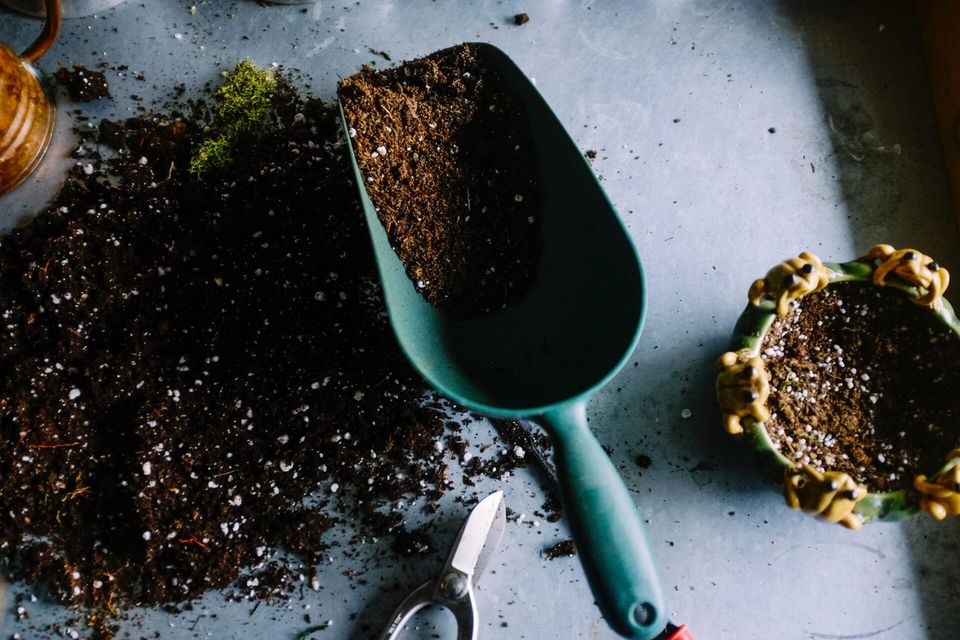My February Garden
Lisa Hunter • February 8, 2021
Hearts beat a little faster this month with the arrival of Valentine’s Day. Likewise, for gardeners, pulses begin to race with the prospect of spring on the horizon.

Whether you’re working on the allotment, or in the garden, the jobs list is beginning to increase as we start to prepare for the arrival of a new season. However, don’t be seduced into thinking you should immediately start sowing outside. Jack Frost is a cunning cad, and is always seeking the opportunity to break hearts. Whether it’s a severe frost, or a late flurry of snow, gardening plans can be quickly scuppered. Right now, in this unpredictable month, patience is the key.
So, why not take a moment to enjoy what February has to offer. Hellebores, crocuses, even an early daffodil, can be just what’s needed to get you in the mood for spring.
In the flower garden
- DIVIDE: Most snowdrops have now bloomed and will start to fade before returning to their green form. Now’s the time to lift, divide and re-plant. Over the years, they will naturally increase and spread. However, a gardener’s intervention can result in larger displays, without such a lengthy wait. This process can also be applied to the perennial plants in your herbaceous borders. Quite often a sharp spade is the best way to divide them. Think about how you want your border to look this summer, and re-plant accordingly.
- BORDERS: At the moment, borders aren’t looking at their best, but this is the time to get them ready for the growing season ahead. Remove all weeds and fallen debris, and cut away last season’s dead perennial foliage. Finally, mulch the area, ideally to the depth of six inches, as this will help suppress weeds. Be careful not to cover perennials, shrubs or protruding bulb shoots as this will prevent the sunlight and warmth reaching them, and could encourage rot.
- GRASSES: Ornamental grasses in winter can add wonderful structure to a vacant gardening space. But as winter wanes, they will start to look a little ragged. Deciduous varieties will benefit from being cut back hard with a pair of shears. This may seem drastic, but don’t worry, they will thank you for it. Varieties such as Stipa, need nothing more than a good comb. By using your hands and a sensible pair of gloves to prevent cuts, simply drag your fingers through the clump, removing old growth.
- GREENHOUSE: Despite the cold month, if you’re lucky enough to own a heated greenhouse, polytunnel, or a well-lit, warm, windowsill, you could think about sowing hardy annual and perennial seeds. Whether it’s Cornflower, Cosmos, French marigolds or Echinacea, these can be sown now. Overfill a small pot or tray with either seed or multi-purpose compost. Tap the container gently, and brush the excess soil from the rim. Sow your seeds thinly over the surface, and then cover over with a thin layer of compost, or vermiculite. Once labelled, place your container in a couple of inches of water. It’s preferable to let the pot draw the water from the bottom, leaving the seeds undisturbed, as watering from above can easily scatter the seeds, disrupting their growing environment and hampering germination. Finally, place in a bright and warm spot.
- GARDEN WILDLIFE: Continue to keep bird-feeding stations supplied with food and fresh water. If the weather is too bad to work in, then this might be the time to retreat to the shed, and think about building a nest box. Garden birds will soon be looking for nests to hatch their chicks. So why not help bring birdlife into your garden, and install a nest box.
On the veg patch
- RASPBERRIES: Cut all autumn fruiting varieties down to an inch above the ground. Mulch around the raspberry stalks, ensuring you don’t cover them over. If you want a longer growing season, cut only half of your stock down to above the ground. The untouched canes will provide fruit earlier in the season. This is the last opportunity to plant bare root varieties. Once summer varieties are planted and mulched, cut canes down to ten inches. Again, with autumn fruiting varieties, mulch and cut-down to an inch above the ground.
- FRUIT TREES: There’s still time to prune your fruit trees and soft fruit, such as gooseberries, as they’re still dormant. Beyond this, tree sap will be on the rise, so pruning too late might create a seeping wound, thus damaging the tree. Consider buying bare rootstock varieties, and rhubarb crowns, and plant out.
- CHITTING: Up and down the land right now, windowsills are dominated by seeding potatoes sat on eggbox thrones, with their eyes looking skyward. However, if you haven’t bought your tubers yet, it’s still not too late. Get them chitting as soon as possible, and six weeks from now you could be sitting them in the warming soil of your allotment, or in growing bags.
- SOW: If you have a cold frame or greenhouse, ideally with a heat source, then you might consider sowing into plugs the following; onions, beetroot, cabbage, leeks, spring onion, lettuce, radishes, and tomatoes. If you sow into large plugs, and thin your seedlings out accordingly, then your young plants can continue to grow on until you’re ready to plant out. This method will not only give you the time to prepare the plot, but give the soil an opportunity to warm up in the early spring weather. Bear in mind, it’s still a low winter sun, so light levels can make plants leggy. If you’re hoping to sow seeds, such as carrot, straight into the ground, wait until at least the end of the month. Ideally, warm the allocated plot, by covering the soil for few weeks with either a cloche, or plastic sheeting. This extra warmth is precious when trying to germinate seeds, such as carrots and parsnips. Remember to stagger your sowing, otherwise months from now you may find yourself with a glut.




